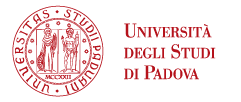Development and stress evaluation in aquatic animals CALL 2025/2026
Danio rerio is one of the best models for studying the response of animal to the different environmental variables (such as stress, fasting, hypothermia, hypoxia, and alteration of the photoperiod) but also serve as a model for various human diseases.
The need to mimic several human diseases has driven researchers to utilize various animal species as model organisms. Among these, rodents have been extensively used for this purpose. However, sometimes this model fails to mirror the human disease phenotype. Zebrafish was introduced as a model for genetic studies in the early 1980s due to its high genomic similarity with humans (70% of human genes have zebrafish orthologs). This similarity has made zebrafish valuable for studying human genetic diseases. Advances in the zebrafish genome map and gene-editing technologies like CRISPR/Cas9 have further enhanced the ability to create specific gene knockouts, with CRISPR/Cas9 offering a reverse genetic approach for generating knockout zebrafish.
Recently a new zebrafish mutant line introducing mutation R164H in SERCA1 protein by CRISPR/Cas9, has been generated and characterized and is now available at the Zebrafish Facility of the University of Padova.
This suitable and easily manageable mutant line, has become the non-mammal model of Brody myopathy, an ultra-rare disorder of skeletal muscle function in human, for which neither mouse model nor specific therapy exists. Environmental variables will be tested in this new pathology model.
Five publications related to the Research Topic for the candidate interview:
- F. Tonelli, J.W. Bek, R. Besio, A. De Clercq, L. Leoni, P. Salmon, P.J. Coucke, A. Willaert, A. Forlino. Zebrafish: a resourceful vertebrate model to investigate skeletal disorders Front. Endocrinol. (2020) 11:489. https://doi.org/10.3389/fendo.2020.00489
- Kelly JR, Shelton SG, Daniel DK, Bhat A, Mondal R, Nipple F, Amro H, Bower ME, Isaac G, McHaney G, Martins EP, Shelton DS. Wild Zebrafish Sentinels: Biological Monitoring of Site Differences Using Behavior and Morphology. Toxics. (2021); 9(7):165. https://doi.org/10.3390/toxics9070165
- S.R. Keenan and P. D. Currie. The developmental phases of zebrafish myogenesis. J. Dev. Biol. (2019) 7, 12. https://doi.org/10.3390/jdb7020012
- Choi TY, Choi TI, Lee YR, Choe SK, Kim CH. Zebrafish as an animal model for biomedical research Exp. Mol. Med. (2021) 53:310–317. https://doi.org/10.1038/s12276-021-00571-5
- Danos N, Lauder GV. Challenging zebrafish escape responses by increasing water viscosity J. Exp. Biol. (2012) 215, 1854-1862, https://doi.org/10.1242/jeb.068957
Tutor: Prof. Giuseppe Radaelli - Prof. Roberta Sacchetto
mail: giuseppe.radaelli@unipd.it - roberta.sacchetto@unipd.it






